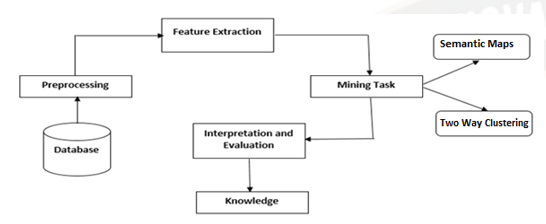KC Two-Way Clustering Algorithms For Multi-Child Semantic Maps In Image Mining
Main Article Content
Abstract
Image mining is now a thriving and expanding field of computer science research. Image mining is linked to the advancement of data mining in image preparation. Image mining is used to extract hidden information and in other situations where the photos do not clearly describe the situation. Image mining combines machine learning, data handling, application autonomy, and image preparation concepts. Semantic maps are used to visualize image data stored in image databases. We recommend using Multi-Child Semantic Maps to build semantic maps which fully display the image. In this study, we propose two path clustering on Multi-Child Semantic Maps (MCSM) using the K-C Means Clustering Algorithm, also known as the MCSMK-C algorithm. This algorithm causes image clustering and instructs the mining system to look at the image's top area. When mining, the MCSMK-C algorithm considers the X and Y coordinates. The system looks for groups by examining each object's territory in the database, and it saves a region if it contains more objects than the required number.
Article Details
References
J. Barrasa, O. Corcho, and A. G¶ omez-P¶ erez. R2O, An Extensible and Semantically Based Database-to-Ontology Mapping Language. In SWDB'04,2004.
D. Calvanese, G. D. Giacomo, M. Lenzerini,D. Nardi, and R. Rosati. Data Integration in DataWarehousing. J. of Coop. Info. Sys., 10(3):237{271, 2001.
M. Dahchour and A. Pirotte. The Semantics of Reifying n-ary Relationships as Classes. In Proc.ICEIS'02, pages 580{586, 2002.
R. Dhamankar, Y. Lee, A. Doan, A. Halevy , and P . Domingos. iMAP: Discovering Complex Se-mantic Matches between Database Schemas. In SIGMOD'04, pages 383{394, 2004.
A. Gangemi, N. Guarino, C. Masolo, A. Oltra-mari, and L. Schneider. Sweetening Ontologies with DOLCE. In EKA W'02, pages 166{181, 2002.
J.-L. Hainaut. Database Reverse Engineer-ing. http:// citeseer.ist.psu.edu/ article/ hain-aut98database.html, 1998.
S. Handschuh, S. Staab, and R. V olz. On Deep Annotation. In Proc. WWW'03, 2003.
J. He°in. The Ac ademic Department Ontology. http://www.daml.org, http://www.daml.org/ontologies/, 2000.
H. Knublauch, R. W. F ergerson, N. F. Noy , and M. A. Musen. The Protege OWL Plugin: An Open Development Environment for Semantic Web Applications. In ISWC'04, pages 229{243, Nov. 2004.
M. Lenzerini. Data Integration: A Theoretical Perspective. In PODS'02, pages 233{246, 2002.
A. Y. Levy , D. Srivastava, and T. Kirk. Data Model and Query Evaluation in Global Information Systems. J. of Intel ligent Info. Sys., 5(2):121{143, Dec 1996.
V. M. Markowitz and J. A. Makowsky . Identifying Extended Entity-Relationship Object Structures in Relational Schemas. IEEE TSE, 16(8):777{ 790, August 1990.
E. Mena, V. Kashyap, A. Sheth, and A. Illar-ramen. OBSER VER: An Approach for Query Processing in Global Information Systems Based on Interoperation Across Preexisting Ontologies. In CoopIS'96, pages 14{25, 1996.
R. Miller, L. M. Haas, and M. A. Hernan-dez. Schema Mapping as Query Discovery. In VLDB'00, pages 77{88, 2000.
OpenCyc. http://www.opencyc.or g. , 2003.
Kuruba, Chandrakala, et al. "Data mining and deep learning-based hybrid health care application." Applied Nanoscience (2022): 1-7.
Kumar, M. Rudra, Rashmi Pathak, and Vinit Kumar Gunjan. "Diagnosis and Medicine Prediction for COVID-19 Using Machine Learning Approach." Computational Intelligence in Machine Learning: Select Proceedings of ICCIML 2021 834 (2022): 123.

